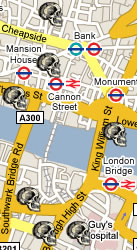Beirut’s traditional Ottoman-style mansions are being razed in favor of high rises that can be sold as having an ocean view.
People can sell these ancestral homes with their glorious oasis-like gardens to developers because there is not a single law on the books protecting properties younger than 300 years old. Evidentally there aren’t any basic zoning laws either, or else there’s no way they’d be allowed to strip the city bare of 2 and 3-story homes and replace them with 20-story towers.
The only law on the books that protects old homes in Lebanon dates back to 1933 when the country was under French mandate. It mainly protects buildings constructed before 1700 although younger buildings can be placed on the list of protected sites either by government directive or private initiative.
“The law basically focuses on the protection of archaeology and antiquities,” Culture Minister Tarek Mitri told AFP.
A survey commissioned by the government in 1997 identified about 250 buildings in Beirut that cannot be demolished.
“The list is outdated now,” Mitri said. “Plus it was done hastily. Some buildings that should be on it aren’t.”
The list is of little consolation to activists like Hallak, who say the issue is more about preserving the country’s heritage than merely saving a building or a mansion.
“It’s important to save an entire street, what we call a cluster… there is a social structure that is completely tied to these buildings,” Hallak says.
“We need a modern law that will allow us the flexibility to preserve these buildings.”
Amen, sister. Those ocean views won’t even exist once the whole town is paved with high-rise towers because they’ll obscure each others panoramas, so it’s really it’s in everyone’s interest to preserve Beirut’s distinctive architectural personality.
Besides, Beirut has been through the wringer, bombed and bullet-riddled and every other violence under the sun. How monstruous to think of its famous beauty having survived all that only to be destroyed by a real estate bubble.




